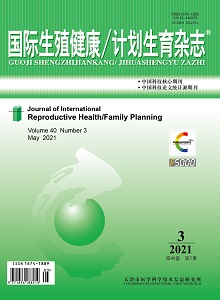Essentially, intrauterine adhesion (IUA) is a endometrial damage and fibrosis due to injury, infection and other factors. The pathogenesis of IUA includes epithelial-mesenchymal transformation, excessive inflammatory response, dysangiogenesis, low estrogen status and endometrial stem cell loss. The clinical treatments at present, such as hysteroscopic adhesion separation, hormone therapy, physical barrier implantation, etc., cannot effectively improve the IUA condition of patients with moderate to severe IUA, and cannot also prevent the recurrence of adhesion. In recent years, mesenchymal stem cells have showed the great potential in tissue repair and regenerative medicine. At present, the main stem cells used in IUA study are endometrial mesenchymal stem cell, bone marrow mesenchymal stem cell, fat mesenchymal stem cell and gestational appendage derived mesenchymal stem cell. Through immune regulation, differentiation and paracrine, the mesenchymal stem cell can rebuild endometrial tissue and improve endometrial function, which is a new hope for patients with intrauterine adhesion.

